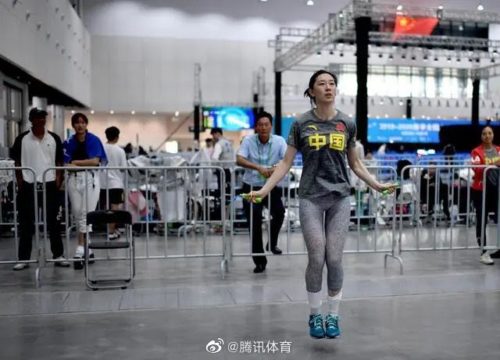China’s stay-at-home economy is here
Omicron outbreaks and lockdowns are hitting the Chinese economy hard, but these are boom times for makers of fitness equipment, pre-prepared meals, and work from home gear.

COVID-19 and the resultant lockdowns have had a deleterious effect on China’s economy that is now starting to reflect in the economic data: April saw the first negative industrial growth in two years. But conversely, the pandemic has also created a new economic dynamo: The stay-at-home economy.
While the industrial sector is struggling with supply chain management and rising raw material costs, the population confined to their homes are doing it their own way, exercising and buying fitness products, pre-prepared meals, and smart home devices; and working from home with new office furniture and video-conferencing equipment.
The context
There is something akin to a fitness fever going on in China centered on young people in the home, who are watching “cloud fitness” videos online, and buying home exercise equipment, nutritional supplements and slimming foods.
- In 2021, the number of fitness content creators on Douyin, China’s version of TikTok, increased by 39% year-on-year, and the number of sports and fitness videos increased by 134%.
- In 2015, around 160 million people were engaging in fitness activities, or 11.6% of the population; in 2021 this had increased to 300 million, or 21.5% of the population.
In 2021, China’s fitness market (i.e. including anything from gyms, fitness centers, personal trainers and equipment to food and supplements, clothing, and sporting goods) was worth about 786.6 billion yuan ($116.47 billion), and is forecast to reach 882 billion yuan ($130.59 billion) in 2022.
- In February, Keep 北京卡路里科技, a Chinese mobile fitness app, filed for an IPO in Hong Kong. The app has around 34.4 million active monthly users.
- Since March, sales of some fitness equipment products have doubled. Sales of yoga stretchers, for example, have increased by 868% year-on-year, and sales of yoga shoes have increased by 816%. Sales of dance shoes (for fat-reducing dance routines) have increased by 700% year-on-year.
Pre-prepared meals and vegetables have become very popular in the cities. These are complete meal kits for dishes as complicated as spicy crayfish or Korean fried chicken that require minimal preparation, often just heating up or adding boiling water.
- According to JD.com, during the period April 24 to May 15, the transaction value of pre-prepared vegetables in China increased by more than 250% year-on-year, and sales of pre-prepared dishes increased by 50%.
- According to one estimate, the pre-prepared vegetable market will reach 410 billion yuan ($60.70 billion) in 2022, and breach a trillion yuan within the next five years.
The stay-at-home economy has driven up demand for smart home devices. Shipments of a wide range of smart devices, including locks, speakers, lights, and VR games, will be around 260 million units in 2022, when the smart home market is expected to reach around 200 billion yuan ($29.61 billion).
- Security devices have been especially popular. In 2021, 4.58 million smart locks were sold online in China, an increase of 90% year-on-year.
- Other popular products are air fryers and VR glasses.
The rise of the stay-at-home economy has also greatly increased demand for products that facilitate working from home, notably work furniture and video conferencing equipment.
- According to one estimate, the domestic office chair industry was worth about 28.1 billion yuan ($4.16 billion) in 2021, and is expected to reach 37.6 billion yuan ($5.56 billion) in 2026.
- The domestic video conferencing market expanded from less than 10 billion yuan ($1.48 billion) in 2018 to 14.82 billion yuan ($2.19 billion) in 2021.
China news, weekly.
Sign up for The China Project’s weekly newsletter, our free roundup of the most important China stories.
The takeaway
COVID and Beijing’s response to it has shackled parts of China’s economy, but boosted economic development focused on the home.
The stay-at-home economy might be tied in large part to COVID, and will fade away with the pandemic, but as in other countries, some habits like the consumption of pre-prepared meals and the use of home fitness equipment are likely to linger. Working from home is also now a reality for many white collar workers and the companies that employ them, meaning that smart devices and other products made for work and consumption will have a lasting and increasingly important presence in Chinese people’s homes.


